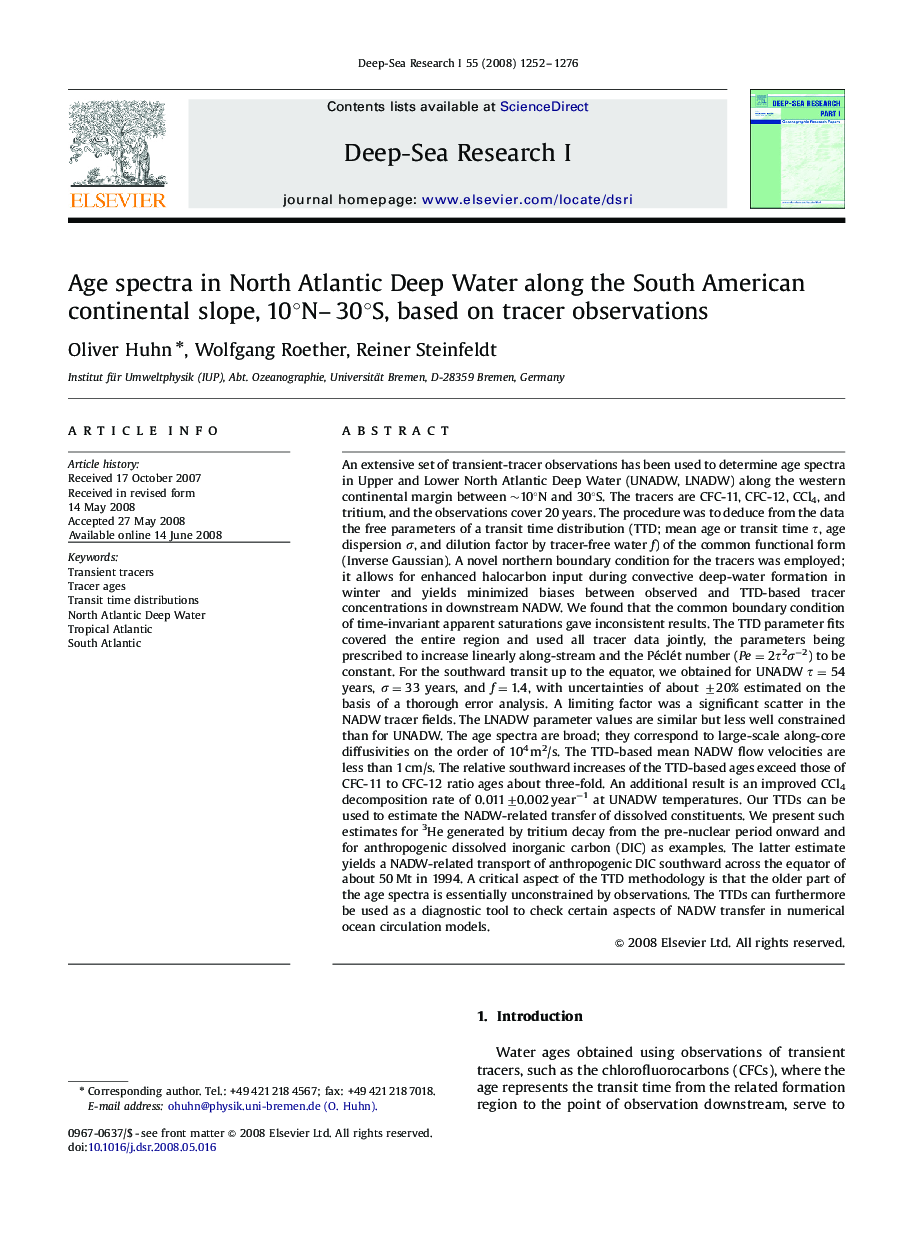| Article ID | Journal | Published Year | Pages | File Type |
|---|---|---|---|---|
| 4535524 | Deep Sea Research Part I: Oceanographic Research Papers | 2008 | 25 Pages |
An extensive set of transient-tracer observations has been used to determine age spectra in Upper and Lower North Atlantic Deep Water (UNADW, LNADW) along the western continental margin between ∼10°N and 30°S. The tracers are CFC-11, CFC-12, CCl4, and tritium, and the observations cover 20 years. The procedure was to deduce from the data the free parameters of a transit time distribution (TTD; mean age or transit time τ, age dispersion σ, and dilution factor by tracer-free water f) of the common functional form (Inverse Gaussian). A novel northern boundary condition for the tracers was employed; it allows for enhanced halocarbon input during convective deep-water formation in winter and yields minimized biases between observed and TTD-based tracer concentrations in downstream NADW. We found that the common boundary condition of time-invariant apparent saturations gave inconsistent results. The TTD parameter fits covered the entire region and used all tracer data jointly, the parameters being prescribed to increase linearly along-stream and the Péclét number (Pe=2τ2σ−2) to be constant. For the southward transit up to the equator, we obtained for UNADW τ=54 years, σ=33 years, and f=1.4, with uncertainties of about ±20% estimated on the basis of a thorough error analysis. A limiting factor was a significant scatter in the NADW tracer fields. The LNADW parameter values are similar but less well constrained than for UNADW. The age spectra are broad; they correspond to large-scale along-core diffusivities on the order of 104 m2/s. The TTD-based mean NADW flow velocities are less than 1 cm/s. The relative southward increases of the TTD-based ages exceed those of CFC-11 to CFC-12 ratio ages about three-fold. An additional result is an improved CCl4 decomposition rate of 0.011±0.002 year−1 at UNADW temperatures. Our TTDs can be used to estimate the NADW-related transfer of dissolved constituents. We present such estimates for 3He generated by tritium decay from the pre-nuclear period onward and for anthropogenic dissolved inorganic carbon (DIC) as examples. The latter estimate yields a NADW-related transport of anthropogenic DIC southward across the equator of about 50 Mt in 1994. A critical aspect of the TTD methodology is that the older part of the age spectra is essentially unconstrained by observations. The TTDs can furthermore be used as a diagnostic tool to check certain aspects of NADW transfer in numerical ocean circulation models.
